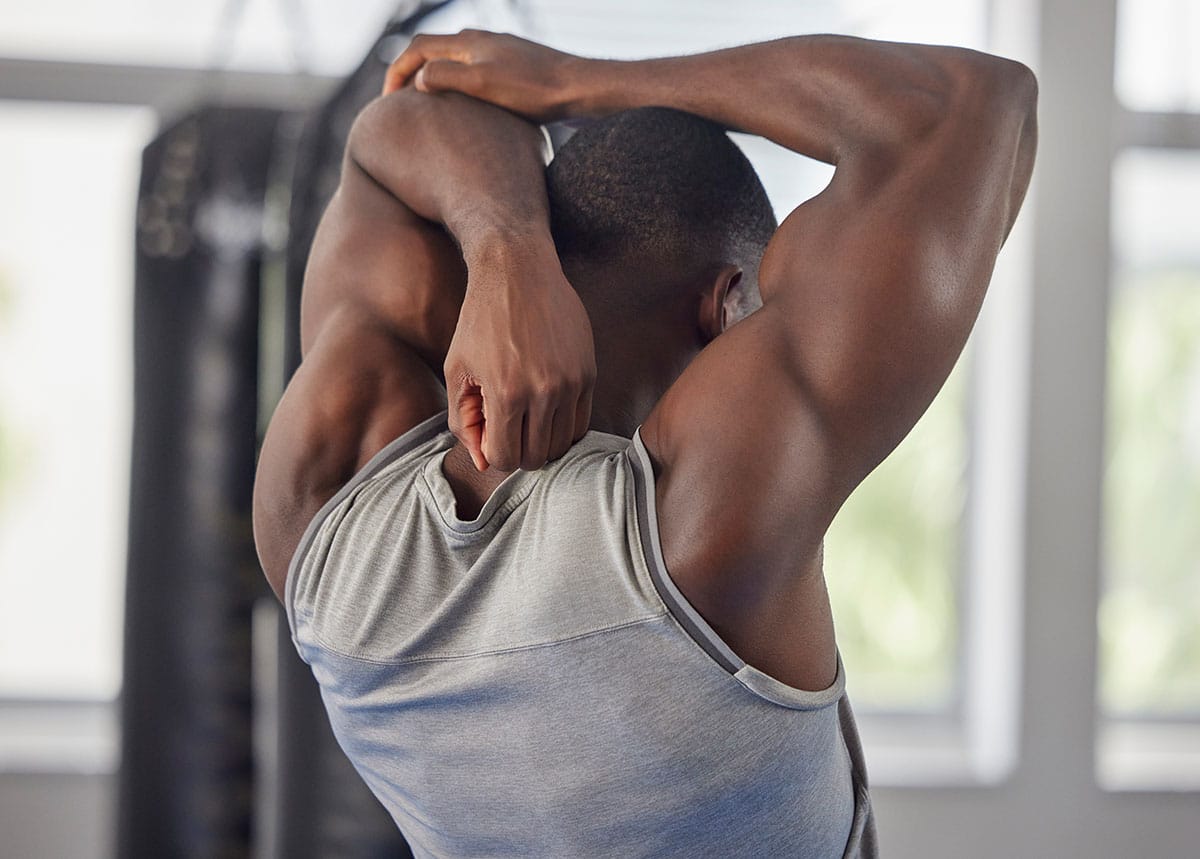The Cable Overhead Tricep Extension: Your Ticket to Sculpted Arms
Do you want to form your arm and increase its strength? Add cable overhead tricep extension to your routine.
Picture this: you're in the gym, determined to build those impressive, sculpted arms that turn heads. You've done your curls and presses, but there's one exercise that can truly elevate your tricep game: the cable overhead tricep extension.
This powerful exercise is crucial for anyone serious about building arm strength and developing a well-defined physique, particularly those interested in aesthetic workouts.
Today, we’re learning what makes this exercise so effective, how to perform it correctly, and a few variations to keep your workouts fresh and exciting. Keep reading!
Why Focus on the Cable Overhead Tricep Extension?
First off, let's talk about why this exercise deserves a spot in your workout routine.
The cable overhead tricep extension is an awesome move for targeting the triceps, which are those muscles at the back of your upper arms. These muscles play a huge role not just in arm strength but also in giving your arms that toned, defined look. But why choose the cable version over free weights? Let’s break it down.

Benefits Galore
- Isolation of the Triceps: One of the standout benefits of the cable overhead tricep extension is its ability to isolate the triceps. This means you're really honing in on those muscles without bringing too many other muscles into play. Perfect for targeted muscle growth, even if you're dealing with bad tricep genetics.
- Joint-Friendly: Unlike some free-weight exercises, using cables can be a bit gentler on your joints. The constant tension from the cable provides a smooth range of motion, reducing the risk of injury. This is especially beneficial if you're recovering from an injury or looking to prevent one.
- Improved Muscle Engagement: The cable's resistance helps keep your muscles engaged throughout the entire range of motion. This means your triceps are working hard from start to finish, maximizing muscle fiber recruitment.
- Core Stability: Believe it or not, performing the cable overhead tricep extension can also help improve your core stability. Keeping your body steady during the movement requires engaging your core muscles, making you a step (a little one, but still a step) closer to those coveted v-lines as a bonus.
Getting the Form Right
Alright, let's get down to business. Proper form is key to getting the most out of any exercise, and the cable overhead tricep extension is no exception. Here's a step-by-step guide to ensure you're doing it right:
- Set Up the Cable Machine: Attach a rope handle to the high pulley of a cable machine. Adjust the weight to a reasonable level and remember, form over ego! It's better to start light and get the technique down before increasing the weight.
- Position Yourself: Stand facing away from the machine, feet shoulder-width apart. Grab the rope with both hands and extend your arms overhead. Your elbows should be close to your head, and your hands should be gripping the rope with your palms facing each other.
- Engage Your Core: Keep your core tight to stabilize your body. This will help you focus the effort on your triceps. A stable core also prevents you from swaying or arching your back, which can lead to injury.
- Execute the Move: Slowly lower the rope behind your head by bending your elbows. Keep your upper arms stationary and close to your head. Once your forearms are parallel to the floor, pause for a moment. This pause is crucial for maintaining control and ensuring your triceps are doing the work.
- Extend and Squeeze: Push the rope back to the starting position by extending your elbows. Squeeze your triceps at the top for maximum effect. This squeeze is where the magic happens, so don't rush through it.
- Repeat: Aim for 10-15 reps, depending on your fitness level. If you're new to the exercise, start with fewer reps and gradually increase as you become more comfortable with the movement.
Common Mistakes to Avoid
Even the best of us can slip up sometimes. Here are some common mistakes to watch out for:
- Using Too Much Weight: It's tempting to load up the machine, but too much weight can compromise your form. Start light and focus on technique.
- Flared Elbows: Keep those elbows close to your head to ensure the triceps are doing the work. If your elbows start to drift outward, it means you're losing focus on the triceps and other muscles are taking over.
- Arching Your Back: Maintain a neutral spine to avoid putting unnecessary strain on your back. Engaging your core will help keep your spine aligned and prevent any back issues.
- Rushing the Movement: Take your time with each rep. Control the movement both on the way down and up. This ensures that your muscles are working hard and you're not relying on momentum.
Spice It Up with Variations
Variety is the spice of life, right? The same goes for your workouts. Here are some variations to keep your tricep training fresh and exciting:
1. Single-Arm Cable Overhead Extension
This variation allows you to focus on one arm at a time, helping to correct any muscle imbalances. Simply perform the exercise with one hand while the other rests on your hip or stabilizes your body. This can also help improve your mind-muscle connection, as you're focusing on one side at a time.
2. Reverse Grip Cable Extension
For a different angle, try using a reverse grip. This can help target the triceps from a slightly different angle, adding an extra challenge to your routine. It might feel a bit awkward at first, but it's a great way to hit the triceps differently.
Standing vs. Seated
You can perform this exercise standing or seated. Standing engages more of your core for stabilization, while seated might help you focus more on the triceps by reducing body movement. Try both and see which one feels better for you.
3. Kneeling Cable Overhead Extension
Kneeling can provide a different kind of stability challenge. By lowering your center of gravity, you're forced to engage your core and glutes more, which can help with overall stability and muscle engagement.
Incorporating It Into Your Routine
So, how do you fit the cable overhead tricep extension into your workout routine? Here are a few tips:
- Pair with Compound Movements: Consider doing this exercise after compound movements like push-ups or bench presses. Your triceps will already be warmed up, allowing you to focus on isolation. This is a great way to finish off your tricep workout with some targeted work.
- Frequency: Aim to include this exercise to a 3-day full body exercise, giving your muscles ample time to recover between sessions. Remember, recovery is just as important as the workout itself.
- Progressive Overload: Gradually increase the weight or number of reps over time to continue challenging your muscles and promoting growth. Keep track of your progress and celebrate those small victories!
- Supersets for Efficiency: If you're short on time, consider incorporating the cable overhead tricep extension into a superset. Pair it with a bicep peak exercise for a killer arm workout that hits both sides of your upper arms.

FAQs
Q: How often should I do the cable overhead tricep extension?
A: It's generally recommended to perform this exercise 2-3 times a week, allowing for adequate rest and recovery between sessions. Remember, muscles grow during rest, so don't overdo it!
Q: Can beginners perform the cable overhead tricep extension?
A: Of course! This exercise is suitable for all fitness levels. Beginners should start with a lighter weight to master the form before gradually increasing the load.
Q: What are the signs that I'm using too much weight?
A: If you find yourself arching your back, flaring your elbows, or struggling to complete the movement with proper form, it's likely you're using too much weight. Reduce the weight and focus on executing each rep correctly.
Q: How does the cable overhead tricep extension compare to free-weight tricep exercises?
A: The cable overhead tricep extension offers constant tension throughout the movement, which can be more joint-friendly and effective for muscle engagement compared to some free-weight exercises. However, both types of exercises have their place in a balanced workout routine.
Q: Can I perform this exercise at home?
A: If you have access to a cable machine or a resistance band setup that mimics the cable machine's functionality, you can definitely perform this exercise at home. Resistance bands can be a great alternative if a cable machine isn't available.
Q: What should I do if I feel pain during the exercise?
A: If you experience pain (not to be confused with the typical muscle burn), stop the exercise immediately. Check your form, reduce the weight, and consult with a fitness professional to ensure you're performing the exercise correctly. Persistent pain should be evaluated by a healthcare provider.
Q: Are there any specific warm-up exercises recommended before doing this exercise?
A: Warming up your entire body with dynamic movements is always a good idea. Focus on arm circles, light tricep stretches, and some push-ups to get your blood flowing to your upper body before diving into the cable overhead tricep extension.
Final Word
And like that, we’ve reached the end! The cable overhead tricep extension is a fantastic exercise for anyone looking to enhance their arm definition and strength. With benefits like muscle isolation, joint safety, and versatility, it's a must-try for your next gym session.
Remember, the key to success with any exercise is consistency and proper form. So, next time you're at the gym, give the cable overhead tricep extension a try and watch those triceps transform. Happy lifting!
Ready to conquer the body of a Greek god? We’ve made it simple to work on customized fitness plans or to introduce a little friendly competition to your fitness community by sharing exercises with your friends. Get started for free through the Flex fitness app.
Related articles


Get fit with Flex
Build muscle & lose weight fast for free.
Available on iPhone + Apple Watch





